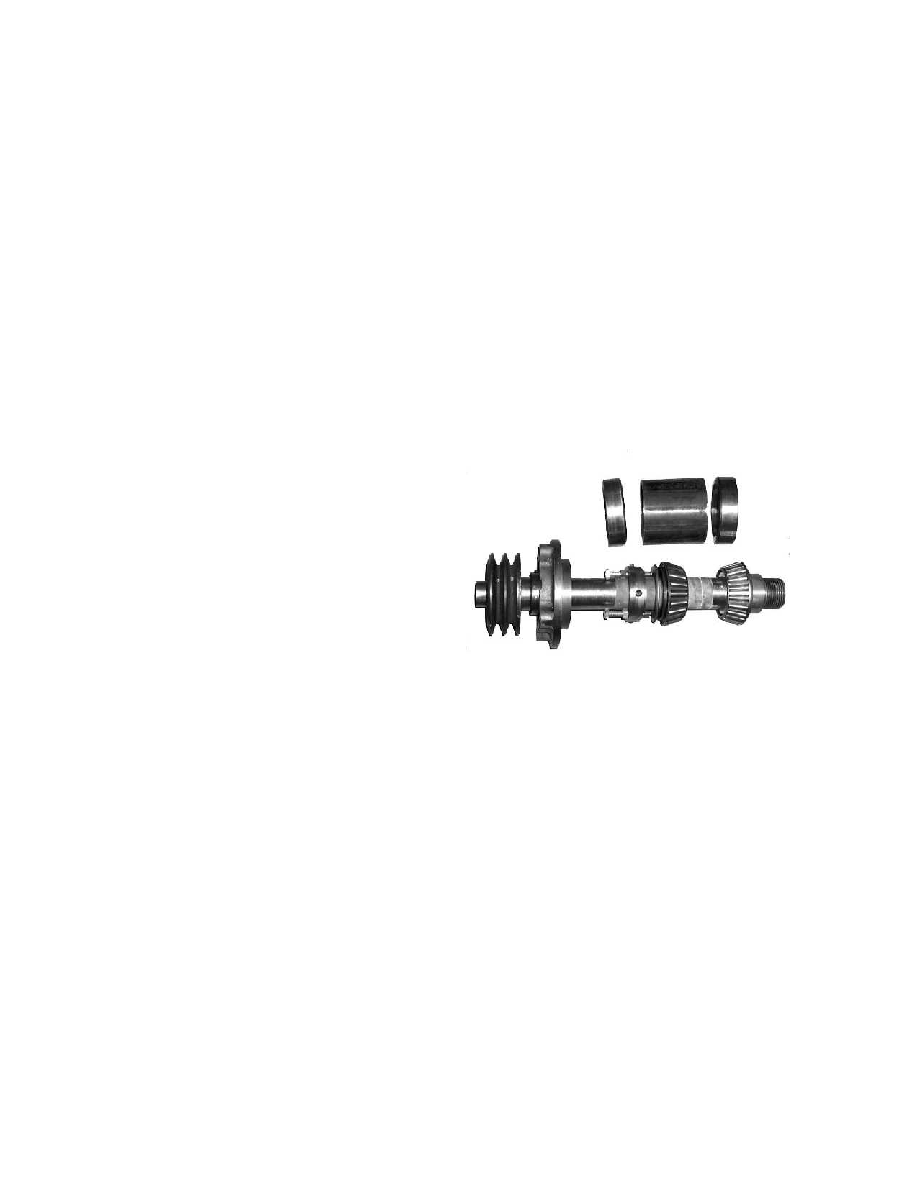
Safety again... Every machinery book or video stresses safety, and well they should. Lifting and
drilling accurate holes in the MultiMachine's big, heavy parts requires a lot of thought. THINK!
Measure everything several times and work on heavy stuff as close to the ground as
possible. A slippery, hundred-pound piece of oily steel on top of a steel table can be very
dangerous.
Construction starts!
Construction should be almost foolproof. In the final chapter I'll tell how to build an even bigger
(may weigh five or more tons) MultiMachine that can be built with no store bought stuff at all!
It also can be built by using only hand tools and no electric power.
How to build a "middle" size roller bearing version that is based on easily
available car and light truck engine blocks.
Middle sized or not, this is no toy since
just the spindle assembly, bearings, chuck and pulley may easily weigh well over 130 pounds
and the whole machine may weigh over half a ton.
The Spindle in detail
Let's start with the spindle since it is the heart of
the machine and there are many ways it can be
built. Each of these different ways affects the way
the rest of the machine is built.
Look carefully at the roller bearing spindle picture
and you will realize that the spindle works just like a
bicycle front axle with just three small differences.
The big spacer that separates the bearings, the way the bearings are adjusted and the third spindle
bearing that functions both as a thrust bearing and to support for the weight of a heavy pulley.
But first lets talk about spindle and bearing size so that you can keep these things in mind when
we study the individual parts.
The maximum spindle size is closely related to the bore size of your engine block and also
to what is the machine going to be used for.
If the MultiMachine is going to be used in a model makers shop, a small 6 cylinder block with a
bore of 3.5" to 3.6" would be fine. Chuck thread size would probably be the very common 1
1/2" 8 and the spindle would have a bore of about 1".
One similar to the one I ended up with would probably have cylinder bore of 3 7/8 or 4" ( This
1/8" difference can be very important because the smaller bore can just be re-bored without
needing to be sleeved. It can easily have the very useful spindle chuck thread size of 2 1/4" 8
(like the South Bend heavy 10 lathe) and would also have 1 3/4" spindle bore. This is a much
more useful machine than one just that is just slightly smaller because having the largest possible
17

